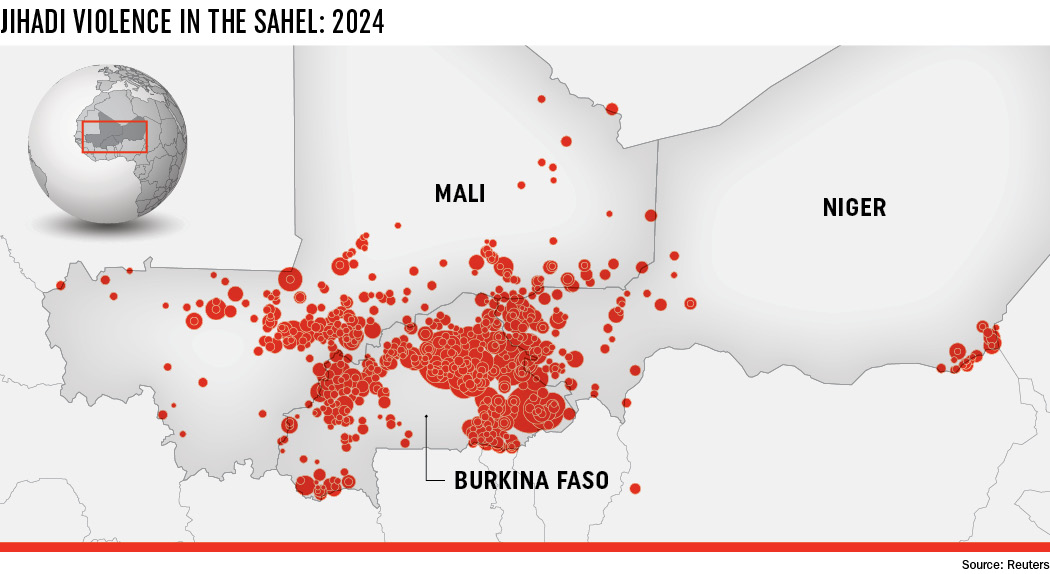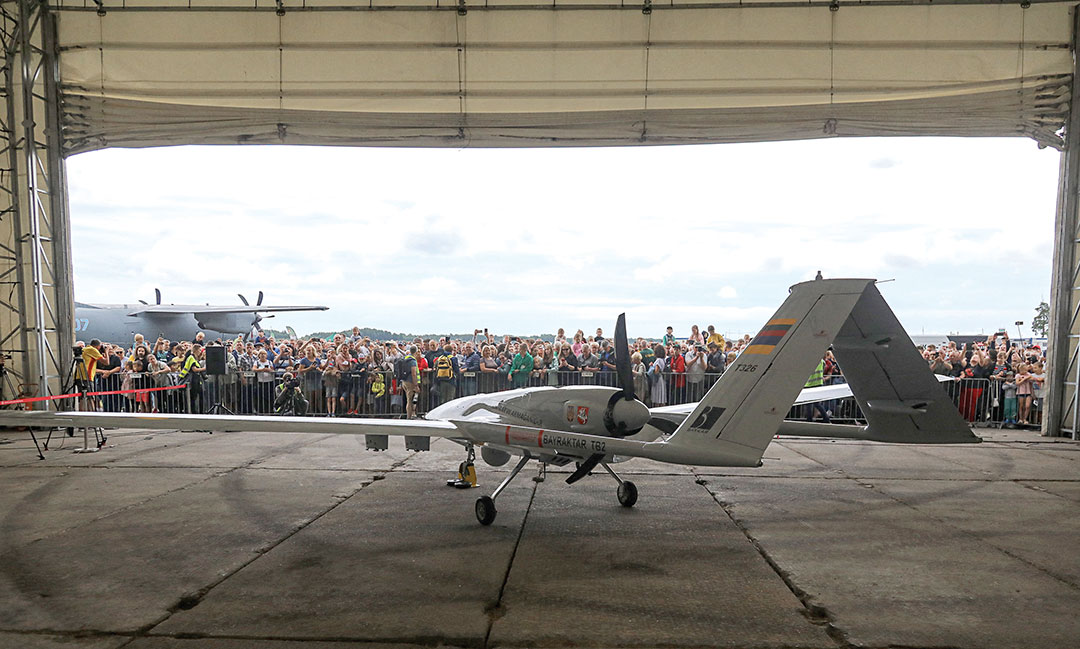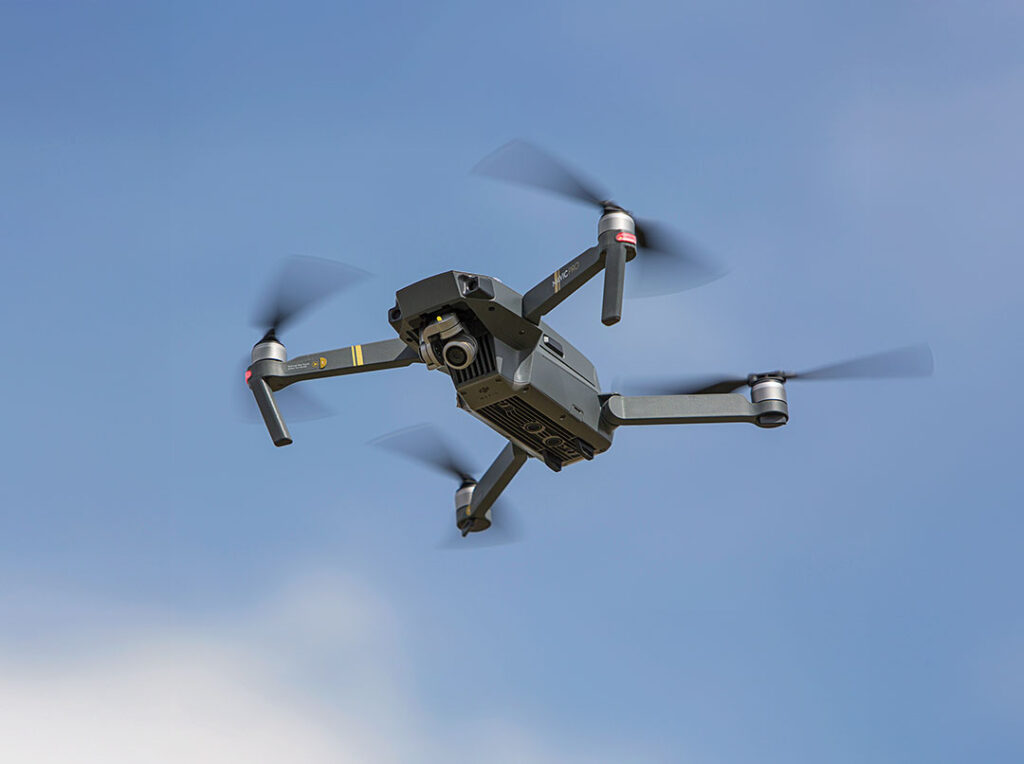The Islamic State group’s attack on Puntland Defense Forces early in 2025 represented a key change in tactics and technology from those used previously. Where earlier attacks had been carried out with improvised explosive devices, the twin January assaults employed aerial drones.
It was Islamic State (IS) in Somalia’s first successful use of drones against the government forces trying to drive the group out of the Cal Miskat mountains. The drone attacks on January 20 and 23 targeted the Puntland Dervish Force and Puntland Maritime Police Force at their base in Buuraha Cali Miskat. At least two Soldiers died, and others were injured.
The attack on Puntland forces happened about a week after the government killed 26 terrorists and shot down nine drones during Operation Lightning. Some of the drones were used for surveillance. Others carried explosives.
Pictures posted on social media by the Somali Ministry of Defense show that the downed IS drones were varieties of the inexpensive, commercially available quadcopters that have allowed terrorist groups across the continent to have air power.
From the mountains of northern Somalia to the arid plains of Mali to the forests of northern Mozambique, terrorist groups such as Islamic State West Africa Province (ISWAP), Jama’at Nusrat al-Islam wal-Muslimin (JNIM), and al-Shabaab in Mozambique’s Cabo Delgado province have added drones to their arsenals.
At first, terrorists used drones primarily for surveillance and intelligence gathering. Some groups used them to film battles, with resulting footage added to online propaganda videos. More recently, terrorists have taken to arming drones with simple explosives and using them against government forces.
 Combined with social media, improvised explosive devices (IEDs) and other irregular warfare techniques, drones have become a crucial force multiplier for terrorists against better armed and equipped government forces.
Combined with social media, improvised explosive devices (IEDs) and other irregular warfare techniques, drones have become a crucial force multiplier for terrorists against better armed and equipped government forces.
For African countries confronting terrorist groups, experts say that terrorists’ rapid and widespread adoption of drones offers a valuable lesson in irregular warfare. Technology may create a short-term advantage for the military, but insurgents catch up by adopting their own irregular tactics.
“We tend to believe that the new toy is going to solve all the problems,” irregular warfare expert and national security analyst Salvador Artiaga told ADF. “What we’re seeing in different places is that it’s not always the one with the biggest weapons or with the latest technology that are the ones that are winning.”
Adversaries Adapt
Using drones and other technology may give militaries a brief advantage, but insurgents will adapt quickly.
“It’s not always about who’s getting ahead,” Artiaga said. “It’s always about who adapts better.”
Sahelian insurgents told French newspaper Le Monde that drone attacks caught them by surprise at first, but they quickly learned to identify their buzzing sound, hide from them and avoid forming groups. The Sahel’s insurgents are stocking up on their own drones and modifying them for irregular warfare.
According to analyst Francis Okpaleke, several factors contribute to the use and spread of drones among Sahel extremists, such as commercial accessibility, low cost, porous borders, technical utility and propaganda.
“The proliferation of drones among VNSAs [violent nonstate actors] introduces a new dimension to counterterrorism efforts, potentially shifting the balance of power in favor of these groups,” Okpaleke wrote in a 2024 analysis for the Global Network on Extremism & Technology.
Although a previous generation of insurgents used mobile phones to detonate IEDs, today’s insurgents can attach an explosive to an off-the-shelf quadcopter to create a flying bomb that can be directed against military targets.
“Insurgents can do whatever they want, and there’s nothing that they really have to worry about,” said Artiaga, who writes for the Irregular Warfare Institute.
“In irregular warfare, the most effective force isn’t necessarily the one with the best technology but the one that uses technology in the smartest way. For $20,000 [in modified drones] I can create chaos.”

In Mali, for example, the Tuareg Permanent Strategic Framework used drones against Russian mercenary bases in Goundam and Léré. In each attack, commercially available quadcopter drones dropped small explosives on their targets, then retreated. The coalition claimed its attacks killed at least nine mercenaries. Similarly equipped drones were part of the ambush of Malian forces and Russian fighters near Tin Zouaten in July 2024. That attack killed 84 mercenaries and 47 Malian soldiers.
Insurgents’ drone attacks force Sahelian governments and their Russian allies to react, keeping them on the back foot, Artiaga said.
“The underlying message is that the insurgents now have air strike capabilities, just like their enemies,” Le Monde reporters Benjamin Roger and Emmanuel Grynszpan wrote in October 2024.
The Battle Goes Digital
Insurgents are adopting another pervasive technology, social media, by using X and other platforms to broadcast battlefield footage and propaganda videos. To that end, insurgents, many of whom are “digital natives” born into the internet age, might be far ahead of the people running their governments, Artiaga said. Insurgents use their ties to the sophisticated media operations of IS or al-Qaida to produce videos that promote their victories to online audiences.
“Propaganda videos disseminated through drones serve not only as a tool for recruitment but also to demonstrate technological prowess, enhancing the groups’ perceived legitimacy and power,” Okpaleke wrote. “They also serve symbolic purposes, projecting airpower, status and technological progress, potentially aiding fundraising efforts.”
Cyberspace gives insurgents everything they need to know about building bombs, modifying drones or running public relations campaigns, he added. Artificial intelligence systems can even do some of the work for them. The result is a technological advantage that feeds insurgencies regardless of what governments throw at them, Artiaga said.
“You have forces in the government that are waiting for this new technology to do everything for them,” Artiaga told ADF. “While the government is relying on this new technology, their adversaries are adapting within the environment.”

Technology versus Human Dynamics
Artiaga noted that even as they load up on drones and other technology to fight insurgents, African nations appear to be missing the lessons other countries have learned when dealing with long-running irregular warfare: The side with the better technology does not always win.
“It’s fascinating to watch the interaction between forces with advanced technology and those who are less dependent on it,” Artiaga wrote in an analysis for the website Irregular Warfare. “Utilizing rudimentary communication techniques and integrating with local populations often allow these low-tech forces to evade detection.”
Technology offers powerful tools to enhance irregular warfare strategies, but it also comes with vulnerabilities when dealing with insurgents skilled in guerrilla tactics, according to Artiaga. Beyond that, insurgents who have the support of the local population, whether through their own actions or in response to government attacks, can be nearly impossible to defeat.
An overreliance on technology by either side engaged in irregular warfare can be a vulnerability, Artiaga added.
“In the realm of irregular warfare, the essence of victory remains rooted in understanding human dynamics, grasping local geopolitical currents, and mastering the timeless art of adaptability,” he wrote. “As the timeless strategist Sun Tzu articulated, the pinnacle of warfare artistry lies in subduing the enemy without direct confrontation.”

